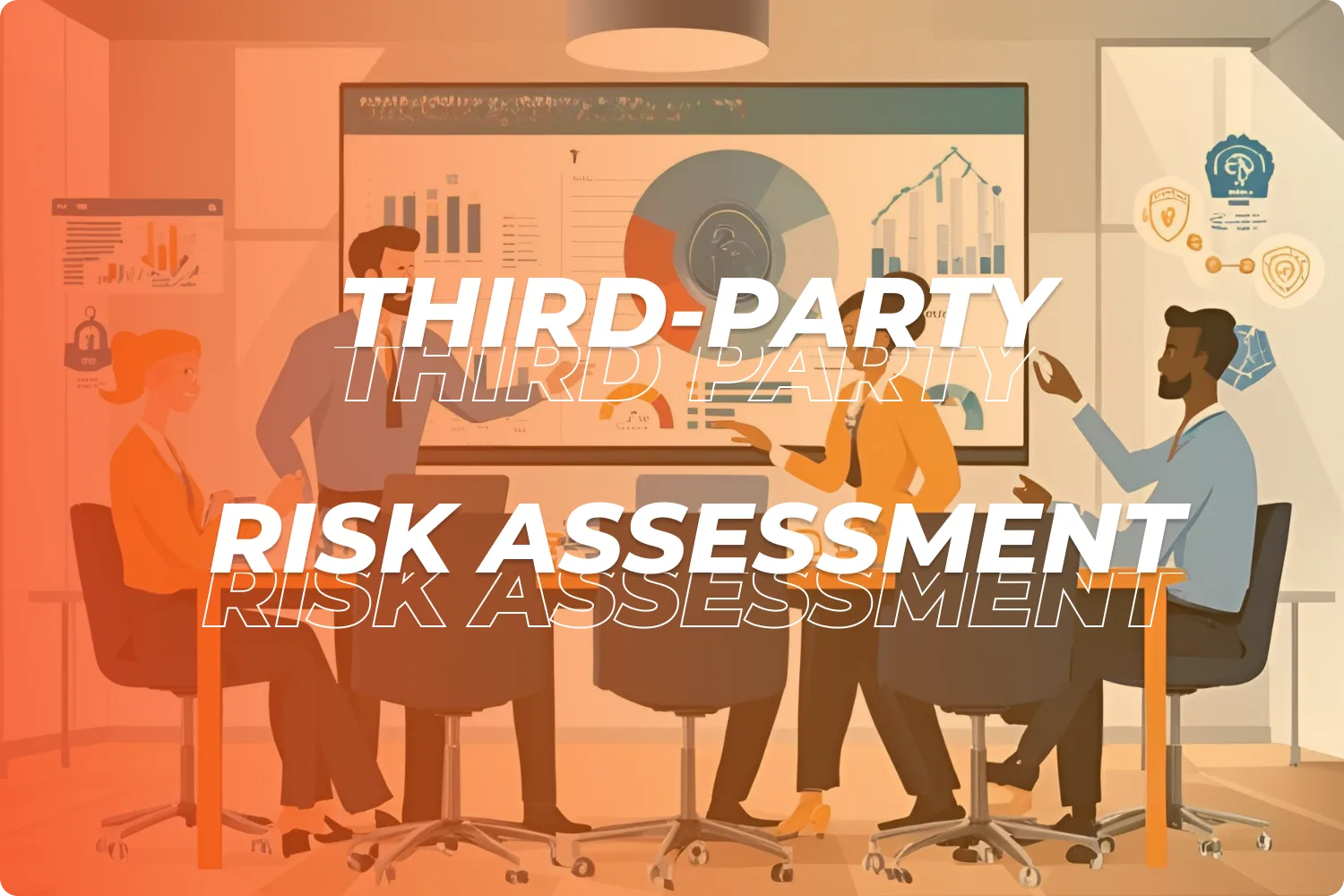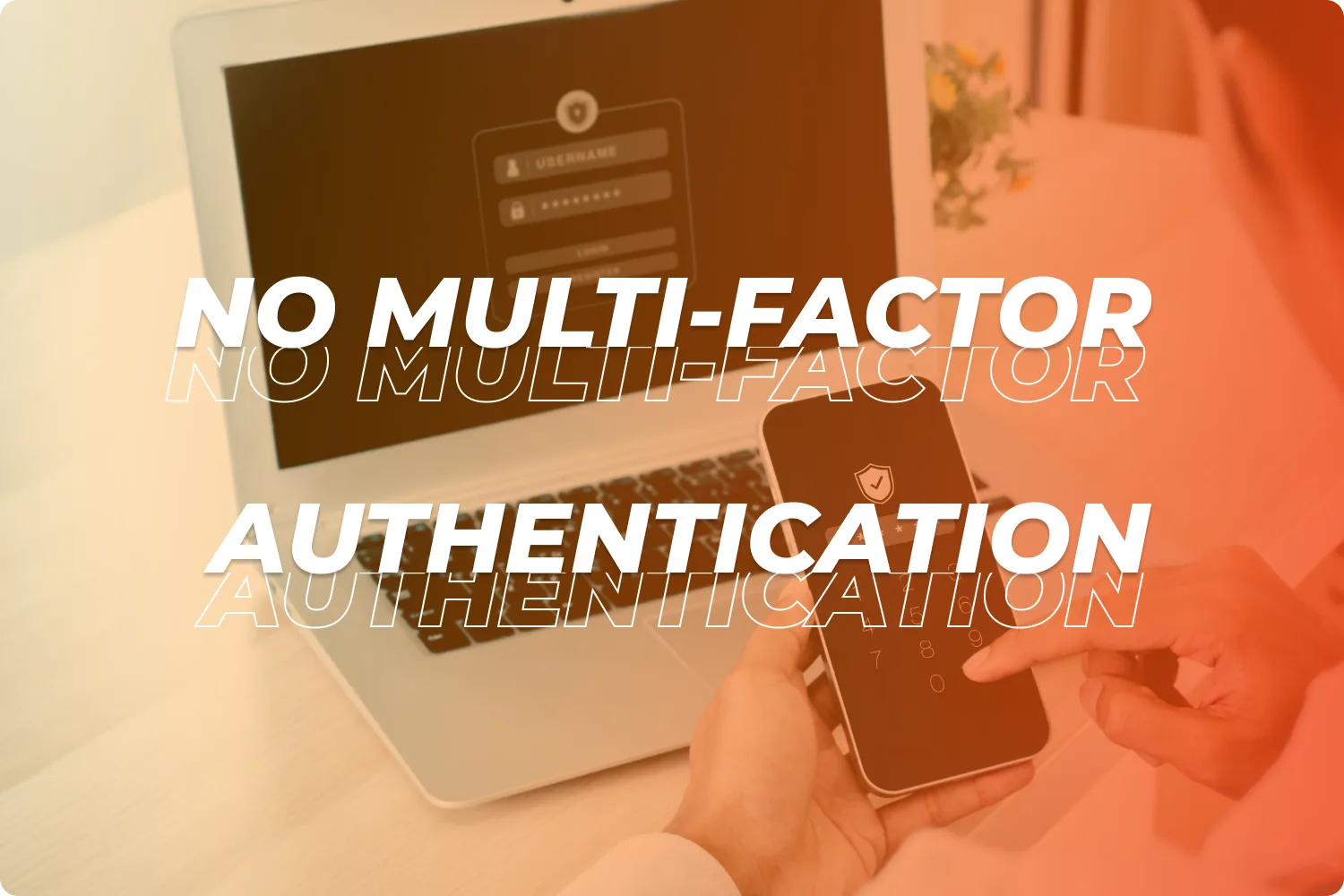Over 70% of businesses were in danger of suffering a ransomware attack in 2023. This indicates just how in our current world, a business’s success is becoming even more vulnerable as cyber-attacks spread and can immediately destroy a business in terms of sensitive material leaks, financial loss, and a violation of trust. Despite significant IT security investments, most companies still expose their critical systems to threats. Starting with using poor passwords to avoid software updates, these errors leave companies open to cyber attackers.
In this article, we will highlight the top 10 IT security mistakes that organizations commit and how to avoid them. When you partner with an IT support company like FunctionEight, you can have the confidence that the best protective measures are installed, stay ahead of the threats that emerge, and establish long-term security on company systems and other sensitive information.

- Reliance on Anti-Virus Software Alone
While antivirus software is extremely needed, sometimes companies believe that it’s all they require. Antivirus software can identify and eliminate known malware, but modern cyber attackers are much more complex than simple viruses. Modern hackers employ fileless malware, zero-day, and phishing attacks that bypass, ignore, or evade traditional security measures. Cyberattacks have the capability of penetrating your systems via malicious email attachments or hijacked sites, rendering antivirus ineffective against advanced attacks. Such overdependence on security solutions at a basic level brings about an unrealistic sense of protection that leaves organizations vulnerable to costly attacks, data loss, and system crashes.
A layered cybersecurity approach is what companies need in place to better safeguard sensitive information and critical systems. These tools include endpoint detection and response (EDR), extended detection and response (XDR), network monitoring software, and ongoing training for employees on how to identify cyber threats.
Without such controls being implemented, companies are vulnerable to continually changing online threats. Cybersecurity is not merely antivirus software, it requires ongoing monitoring, risk analysis, and developing a culture of security to prevent attacks that prove to be detrimental to the business.
- Failing to Understand the Importance of IT Compliance Regulations
IT compliance standards are one of the many things that businesses tend to neglect, which can lead to catastrophic legal, financial, and reputational consequences. Data protection regulations like the GDPR mandate companies to safeguard confidential information, have tough security protocols and perform routine audits on their systems. Not keeping up with such requirements can cost the company regulatory fines, legal penalties, and loss of consumer trust. For example, the penalty for breaching GDPR can be as high as €20 million or 4% of the annual global turnover, whichever is higher.
But, to become compliant, companies must grasp the rules. They must keep up their IT systems regularly to meet the standards and regulations set forth by hiring a compliance team or by hiring an external expert who can monitor this. In addition, organizations should implement data storage security measures, encryption, and access controls in place to secure sensitive information. Periodic compliance audits, in conjunction with essential employee education, eliminate gaps and mitigate opportunities for accidental violations.
Therefore, IT compliance is not just about avoiding a fine, it is also about establishing a reputation of trustworthiness that protects the business and the customers the business serves.
- Weak Passwords
Weak passwords continue to present serious security threats that many businesses still ignore. Employees use easy-to-remember, simple passwords, reuse them on multiple accounts, and fail to update them regularly. This simplifies access for hackers by brute-forcing into accounts or exploiting exposed credentials from earlier data breaches. Once an attacker has access to a system with a weak password, they can move laterally through an organization’s network, stealing sensitive data, installing malware, or locking users out of vital systems. The easiest points of entry for cybercriminals are weak passwords, yet numerous businesses remain reluctant to restrict their use.
In order to assist in reducing this threat, companies can make sure employees input complicated passwords with a mix of lower and uppercase letters, numbers, and special characters. Another way to create a strong password is to use a password manager or a password with 16 characters or more. Businesses should have policies in place that will keep easily cracked passwords from being used as attackers can take advantage of such simple gaps in security.
- Third-Party Risk Assessment
Businesses often take it for granted that their IT security is sufficient, with no external, third-party risk assessment to support it. In-house teams may miss vulnerabilities merely because they are too comfortable with their own environment and lack access to certain skill sets that a trusted third party can provide. By not taking time to scrutinize their method, companies are left open to the dangers of cyberattacks, data theft, and compliance violations. Since cybercriminals have advanced their methods, even a self-evaluation might not be enough to establish the unknown threats. Additionally, independent audits are frequently required by compliance regulation agencies to ensure that companies comply with the security requirements in the sector, further emphasizing the necessity for third-party evaluation.
External cybersecurity experts can still maintain an aggressive security stance by conducting frequent risk assessments. The assessment offers an internal perspective to identify the loopholes the internal teams failed to notice. It is at this point that external companies with their specialized expertise can help perform IT auditing services. Third-party evaluations provide firms with a mechanism for staying one step ahead of cyber-attacks and limiting the chances of cost-related security breaches.
- Overlooking Software Updates
Firms tend to overlook small enhancements such as software updates and ignore them, instead of regarding them as an essential task that ought to be at the top of their agenda. Most outdated software have specific vulnerabilities that are exploited by cybercriminals in order to gain unauthorized entry into the system. Hackers prefer to attack companies that are using old operating systems, applications, or plugins, knowing that unpatched security systems are an easy entry point. Failure to update software can lead to ransomware attacks, data breaches, and system crashes. Even giants like Equifax are vulnerable to huge breaches if they do not patch known vulnerabilities in a timely manner.
If companies wish to reduce security risks, they need to implement an update schedule policy to ensure that all software, operating systems, and security devices are updated consistently, with the most recent patches available. These updates are not just concerning the security of the software but simultaneously, enhancing the performance and stability of the systems and ensuring that the business is being operated smoothly with fewer ways to enter the cybersecurity domain.
- Inadequate Incident Response Plan
Some businesses downplay the possibility of a cyber-attack or data breach ever occurring to them and then are caught off guard when it does. In those cases, without an Incident Response Plan (IRP) whereby explicit guidance and well-defined processes with respect to threats are in place, companies find themselves scrambling to remediate threats, resulting in delayed response, increased risk of damage, and costly downtime.
Cyberattacks, system crashes, and data breaches can strike at any moment, and businesses with no clear process in place for responding to them expose their reputation and finances to unnecessary risk. In some cases, especially when a breach involves customer data, failing to respond promptly and appropriately can result in regulatory penalties or legal consequences.
Companies need to have an in-depth incident response plan in place that will allow them to respond correctly and avoid further damage. The plan must have elements such as communication plans, isolation protocols, and a clear command structure. Regular incident response drills allow teams to practice their responses and make necessary adjustments.
- No Multi-Factor Authentication (MFA)
Dependence on passwords alone without two-factor authentication or multi-factor authentication (MFA) is another IT error that companies commit. Password-only security is one of the most challenging problems since credentials can be cracked with ease using phishing, data breaches, or brute-force attacks. After an attacker has access to a password, they have complete access to sensitive business information, email accounts, and financial systems.
Weak authentication practices are consistently targeted by cybercriminals willing to enter organizations in an effort to perform expensive breaches or shut down operations. Without MFA, companies are leaving a huge gap in their security defenses that can be easily exploited.
Companies must implement MFA on all critical systems, such as email, cloud services, and remote access accounts, to minimize exposure to unauthorized access. MFA can be defined as a security feature that requires users to authenticate who they are using something other than a basic password, such as a one-time code generated by an authenticator app, a fingerprint scan, or a hardware security key. Even if a hacker stole a password, they would not be able to access the account without the second authentication factor.
- Poor Employee Training
The single biggest security risk companies encounter may not even be technology at all but rather human error. Organizations do not train their employees well on the principles of security and therefore, employees are always viewed as a weak link in the security chain. Without the formality of security awareness training, they can also become the victims of phishing scams, social engineering schemes, or unintentional data leaks.
For instance, in 2023, the company behind Call of Duty, Activision, also became a victim of a data breach when employee data was accessed after they fell for an SMS phishing attack. A single click to any spam link in an email and the hackers already received access to sensitive information about the company, frequently resulting in data breaches, loss of money, as well as damage to the company’s image.
One way to ensure security is to invest in continuous cybersecurity training for all employees, not just IT staff. Businesses must also train employees to properly back up data without putting security at risk and create policies against logging into company devices on public Wi-Fi networks.
- Choosing the Wrong IT Partner
Your IT partner will make or break your business’s cybersecurity, efficiency, and long-term success. The most common error made by many companies is using an IT provider for the lowest price, location, and/or familiarity, without taking the time to ensure quality and reliability. This leaves the business vulnerable to security breaches, system failures, and compliance issues that a more capable and responsive IT partner would likely prevent. The consequences of mismanaged IT services are numerous, including extended downtime, data loss, and lackluster cybersecurity protocols, all of which can threaten business continuity and drive-up costs.
To prevent such mistakes, companies should think about potential IT partners such as FunctionEight that are well-versed, experienced, and have a proven track record. Choosing the right IT support provider is crucial, and the perfect partner ensures preventative maintenance, effective communication, and tailored solutions that match the requirements of any business.
- Becoming a Victim of Cyber Scams
The evolution of cyber scams and fraud is daunting as they are hard to pinpoint, and businesses often never know when they are targeted. Phishing emails, malware, and ransomware attacks are some of the most common techniques hackers use to trick employees into sharing sensitive information or downloading malicious files. These hackers will often disguise themselves as credible sources by using company branding or email to seem legitimate.
These scams are often quite elaborate, so companies should invest in thorough employee training that teaches them how to spot fake messages as well as links that might be malicious. Robust email security filtering and verification of sensitive transactions can, additionally, help mitigate risk. Companies should maintain current cybersecurity policies and regularly test employees with mock phishing attacks. This can spike an organization’s chances of avoiding a cyber scam.
Conclusion
Cybersecurity Ventures estimates that the cost of cybercrime damages can go as far as $10.5 trillion by 2025. You can avoid these common IT security pitfalls by choosing the right partner. At FunctionEight, we provide comprehensive IT support and cybersecurity solutions designed to protect your business from evolving digital threats. With decades of hands-on experience, our team ensures your systems are secure, compliant, and optimised for long-term success. Whether you need proactive monitoring, expert advice, or full-service IT management, we’re here to help you eliminate IT headaches and stay one step ahead.
Get in touch with FunctionEight today and experience IT support that truly supports your business.







